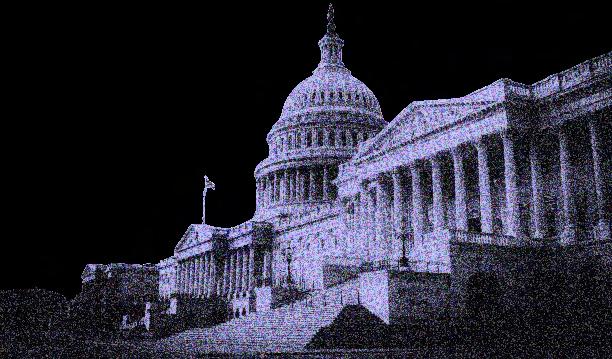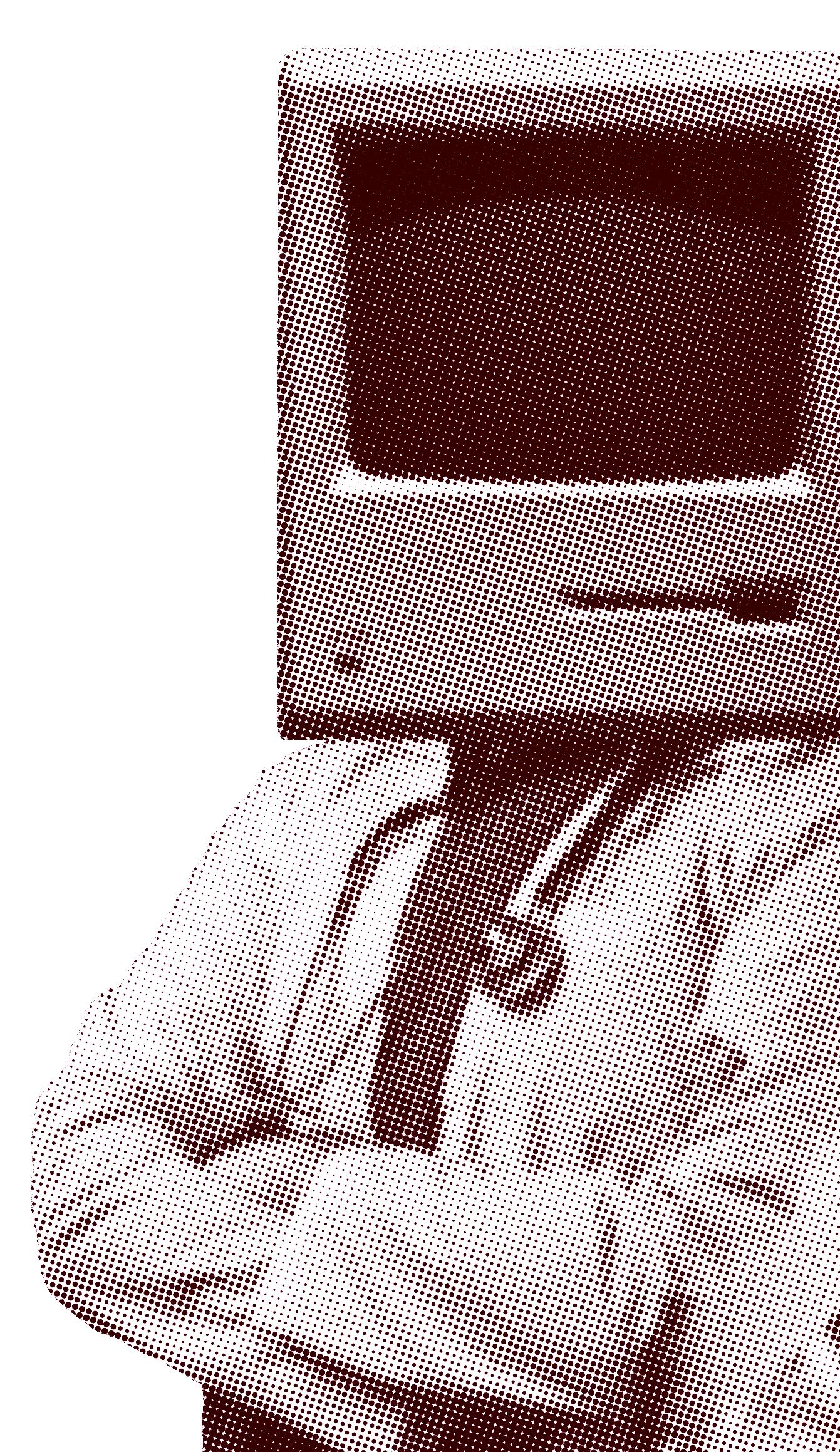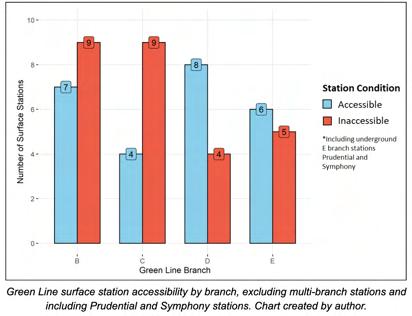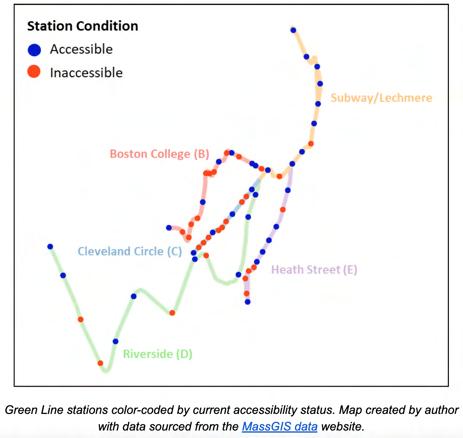
WHY IS AMERICA ADDICTED TO WAR?
MAYA MELE
CONSERVATISM: THE KEY TO SALVATION?

We exist amongst a time like no other. In mere months, society has shifted towards a post-pandemic era of technological innovation, political unrest, and a slew of contentious international conficts. As people adapt to new ways of working, the rise of Generative AI, and the growing marginalization of communities around the globe, students must learn to navigate a landscape that places emphasis on their every move, every turn, and most notably, every word.
The Political Review gives students an outlet to evaluate and communicate these changing dynamics. Words, on their own, hold little power. To truly write is to use words as tools to translate ideas and perspectives grounded in truth. To put something in writing is to present your thoughts for others to carefully review and critique—not with malice, but with the intention of forming new beliefs and contributing to the dissemination of knowledge. The Political Review stands upon this foundation.
NUPR members and collaborators set the bar for writing, inspiring undergraduate students and other readers to reclaim their perspectives and challenge their pre-existing notions about critical issues. Our columnists, staf writers, editors, and contributors continue to fnd new topics and theories that drive us forward. The Political Review magazine remains unimpeded by predetermined themes or prescribed articles, opting to provide Northeastern minds full creative control. When left to innovate, our members write from a wide spectrum of interests, from popular culture and campus-based observations to sociopolitical commentary and insights from the world of healthcare.
Our Northeastern-based writers and editors have produced thoughtful and deliberate works to facilitate ideation and growth on and of campus. Thank you for your passion, patience, and renewed sense of purpose this semester—we’re so honored to present your Fall 2023 magazine!

Anjali Aggarwal Editor-in-Chief

Zoë Gofe President
Zoë Gofe President
Anjali Aggarwal Editor-in-Chief
Laura Mattingly Creative Director
Krishna Prakash Communications Director
Alexander Buckley Digital Director
Sangya Gupta Treasurer
Founded in 2010, the Northeastern University Political Review seeks to be a non-afliated platform for students to publish articles and podcasts of the highest possible caliber on contemporary domestic and international politics, as well as critical reviews of political books, flm, and events. We aspire to foster a culture of intelligent political discourse, promote awareness of political issues, and provide a forum for students to discuss their views and refne their options. We hope to refect the diversity of thought and spirit at Northeastern, including the dual ethic of academic and experiential education our school embodies.
Jake Egelberg Managing Editor
Krishna Prakash Managing Editor
Gya Gupta Columns Editor
Irena Zervas Columns Editor
Margaret Barnes Magazine Editor
Jessica Gudin Magazine Editor
Hannah Libelo Magazine Editor
Kennedy Little Magazine Editor
Isabelle Young Magazine Editor
Michelle Zhong Magazine Editor
Sean Drew Designer
Meagan Ellis Designer
Andy He Designer
Check out our website at nupoliticalreview.com Want to write for NUPR? Email nupreic@gmail.com Questions about the club? Email nupoliticalreview@gmail.com
Magazines printed by Puritan Capital








PERSPECTIVES




Scan a QR code with your phone camera to visit the online version of the piece, which includes citations for factual claims. Online versions may difer slightly from print ones.


Weight and health are not synonymous, but many associate weight loss with looking and feeling healthier. This imperfect relationship between weight and health can make maintaining a certain size challenging, and many Americans do not have the time or energy for the lifestyle change required to alter their appearance.
Fad diets ofer a fast, low efort weight-loss solution. When diet trends and lifestyle changes feel inefective, those who can aford it resort to medicine.
Ozempic is a semaglutide injection that reduces blood sugar, particularly for those with type 2 diabetes. Yet, Ozempic’s consumers are largely celebrities interested in its weight loss efects.
Tesla CEO Elon Musk said that he takes the weekly injection to stay “ft, ripped, and healthy.” In clinical trials, weekly semaglutide injection showed promising results: injections helped participants lose 12% of their body weight in 28 weeks. However, these trials don’t account for the fact that Ozempic users must take it indefnitely to maintain their results. As


the Ozempic fad fades away, so will its efects.
DON'T FORGET TO READ THE FINE PRINT!
Ozempic is owned by Novo Nordisk, a leading global healthcare company that markets insulin. Novo Nordisk is well aware of those who take weekly Ozempic injections
exclusively for weight loss. However, they evade responsibility for the fad by including, but not highlighting, disclaimers throughout their product labels and advertisements.
Ozempic’s website page contains countless mentions of its efectiveness as a weight loss treatment while also warning users that it is not designed to be a weight loss treatment. Novo Nordisk strategically avoids losing their weight loss seeking customers by only prohibiting of-label usage of Ozempic.
Ozempic’s manufacturers view this infux of dietenthusiast consumers as a business opportunity. Many of the celebrities that use Ozempic for weight loss are doing so for cosmetic or vanity purposes, while diabetics are primarily interested in its health benefts. By advertising the injection’s efectiveness as a weight loss treatment, Novo Nordisk retains its diabetic customers and exploits its
diet culture customers.
Fueling the fad, a new semaglutide injection recently entered the market under the brand name Wegovy. Though Ozempic and Wevogy contain the same ingredients, Wevogy only advertises its product as a weight loss treatment for chronically obese patients. Wegovy also requires adults who use it to be clinically overweight.
Wegovy’s retail price is currently around $1,700 per injection, which is more expensive than Ozempic’s $1,200; yet, its manufacturers already faced an injection shortage in 2022. With Novo Nordisk also reporting a shortage of the pens that administer the injections, the wealthy’s hoarding of Ozempic threatens those who need semaglutide injections the most.
DIABETICS LOSE ACCESS WHILE CELEBS LOSE WEIGHT
Celebrities aren’t intentionally hijacking diabetic treatments for personal gain. In fact, many that use semaglutide injections for weight loss are unaware of its primary use.
American comedian Chelsea Handler claimed that her antiaging doctor prescribed Ozempic fairly liberally. Ozempic was so easy to access that Handler said she was “unaware” she was using the drug at all. While doctors are prescribing celebrities the injection left and right, diabetics across the US are struggling to get reflls.
To this day, American diabetics struggle to aford insulin, which must be taken regularly to prevent diabetic ketoacidosis, a condition that starves the body’s cells and destroys body tissue. For some, diabetic ketoacidosis can occur in as early as 24 hours. Type 2 diabetics manage their symptoms through a combination of insulin and other medications like Ozempic. Pharmaceutical greed from drug manufacturers like Novo Nordisk makes life unafordable for diabetics— today’s economy makes it impossible for a diabetic to survive. In 2017, medical costs for Americans with diabetes were approximately $9,600 per person. When wealthy celebrities hoard drugs like Ozempic, they remind us that money controls our healthcare system at the expense of our general health and well-being.
ENSURING HEALTHCARE FOR ALL (WHO CAN AFFORD IT)
Healthcare facilities have limited resources. Once the care a person needs exceeds the amount that insurance is willing to cover, funding ultimately determines who receives medical treatment. Because of their wealth, celebrities have greater access to healthcare services and medications.
The United States healthcare system is a business that markets cures for symptoms. Since those with chronic illnesses like diabetes must take medication regularly, they often become forced into a parasitic relationship with the healthcare system. The Ozempic shortage draws focus to the endless eforts of diabetics to simply survive. Celebrity doctors should take Ozempic’s disclaimers into careful consideration before they prescribe them to patients. By prescribing a diabetes treatment as a weight loss tool, celebrities and their physicians directly limit Ozempic’s accessibility to vulnerable populations.

Ozempic’s website simultaneously touts its weight-loss benefts and warns that it is not for weight loss.


A truly equitable healthcare system should maintain the accessibility of certain medications by necessity, but unfortunately, having enough money can provide access

MARY BEIRNE / POLITICS, PHILOSOPHY & ECONOMICS 2025

I“’m the problem. It’s me.” Taylor Swift sang this lyric from her hit song “Anti-hero” in stadiums of tens of thousands of people. The lyric even made its way to US legislators, with Senators using “Anti-hero” to describe the top ticket-selling website, Ticketmaster.
Taylor Swift’s “The Eras Tour” is on its way to being the highest grossing tour of all time, predicted to generate gross revenues of 1.4 billion dollars by the tour’s end in 2024. Yet, many fans struggled to access tickets on Ticketmaster—the ofcial vendor for almost all of Swift’s shows—and faced outrageous prices for resold tickets on other platforms like StubHub or SeatGeek.
The outcry from “Swifties” during the tour’s ticket sales back in November 2022 caught the attention of the US Senate, who held a hearing to investigate the lack of competition in the ticket-selling industry that led to these dramatic price hikes.
The hearing uncovered some startling facts. The four-hour long, bipartisan investigation heard from witnesses such as the CEO of SeatGeek, Jack Groetzinger, who claimed that Ticketmaster harms his profts. He went on to say that many venues prefer SeakGeek’s secure purchasing technology, but ultimately cannot use it out of fear of retaliation from Ticketmaster. While Ticketmaster notes these as false allegations, a 2019 Department of Justice investigation revealed that the company undercut competing ticket-selling websites through Live Nation Entertainment, which is not only Ticketmaster’s parent company, but also a promoting company used by over 2,000 artists. If venues refused to work only with Ticketmaster, Live Nation would refuse to host shows at their locations, costing them artists, and therefore, revenue.
Simply put, Ticketmaster is a monopoly, whose infuence could have consequences
that go far beyond a few disgruntled Taylor Swift fans. Ticketmaster is just one example of the infuence and power of major corporations in the US, exposing the dangers of allowing even one monopoly to operate within a competitive economy.
HOW TICKETMASTER BECAME A MONOPOLY
In 1980, Congress passed the Sherman Antitrust Act to prevent companies from forming monopolies and promote economic competition. When companies control markets, buyers sufer from an inefcient allocation of resources, leading to higher prices and lower production. However, the Sherman Antitrust Act is not an infallible method for preventing monopolies; back in 2010, Live Nation Entertainment merged with Ticketmaster to control over 70 percent of the ticket-selling business.
The Obama Administration approved the merger, claiming it followed the regulations stipulated within Sherman Antitrust Act, which prohibits Ticketmaster and Live Nation from restricting competition through rigged bids or exclusive contracts with venues.


enter the market. Ticketmaster’s monopoly over the entertainment business has fown under the radar because of its brand as the most reliable way to buy tickets combined with artists’ reliance on Live Nation to successfully promote their shows.
It wasn’t until the unprecedented demand for Taylor Swift tickets that people took issue with Ticketmaster. During the Senate hearing, Live Nation CEO Michael Rapino tried to shift the blame from their own shortcomings to scalpers—people who resell tickets on StubHub for signifcantly higher prices. Rapino stated that the genuine ticket selling business has “never been more competitive,” and that every venue they book has multiple ofers from other reputable companies.
Simply put, Ticketmaster is a monopoly, whose infuence could have have consequences that go far beyond a few disgruntled Taylor Swift fans. “ “
But the reality is that Ticketmaster’s reputation, cultivated through its merger with Live Nation, has ensured the loyalty of artists seeking to promote their music and concerts. As a part of the Senate hearing, proponents of Ticketmaster emphasized that artists can choose their ticket-selling outlet, but Live Nation is “so powerful it doesn’t need to exert pressure…people just fall in line,” according to Sen. Amy Klobuchar of Minnesota.
However, Ticketmaster and Live Nation have violated these provisions for over a decade. Since the merger, Live Nation has threatened to prevent artists from playing at venues that do not use Ticketmaster, making it near-impossible for other competitors to
On top of this, Ticketmaster itself makes it challenging to buy tickets by charging exorbitant fees that, in some cases, nearly double starting prices. Ticketmaster’s website claims that these fees “[cover] the cost of technology, people, and resources needed to provide a safe and secure ticket-buying experience.”
However, many users began to challenge this claim after losing Taylor Swift tickets in a cybersecurity breach that allowed numerous bots to infltrate the website and illegally obtain tickets in bulk, avoiding Ticketmaster’s additional fees.
THE FUTURE OF CORPORATIONS AS WE KNOW IT
The issue of monopolization extends beyond a single concert or conglomerate. The Biden Administration has dedicated the better half of his term to promoting economic competition. The Ticketmaster Senate hearing led to greater discourse about monopolization and bipartisan agreement among legislators to call upon the Department of Justice to investigate the efectiveness of our existing antitrust laws.
Ticketmaster and Live Nation violated the Sherman Antitrust Act and dominated the live entertainment industry for years without any pushback, implying that there are other monopolies that operate with little to no government surveillance.
Ticketmaster, Amazon benefts from the US’ inefective antitrust laws.
As a part of the Senate hearing, legislators proposed multiple solutions to enforce antitrust laws inside and outside the scope of Ticketmaster. For instance, to prevent monopolies from dominating markets, reforms could prohibit contracts between venues and ticketing agents and place price caps on up charged products.
Ticketmaster and Live Nation Violated the Sherman Antitrust Act and dominated the live entertainment industry for years without any pushback. “ “
Take Amazon for example.
Back in September 2023, the Federal Trade Commission (FTC) sued Amazon for illegally implementing monopolistic practices, arguing that Amazon’s low prices and fast deliveries have prevented existing companies from
However, these ideas have not yet turned into policies. We have not seen improvement on the ticket-buying front, and fans continue to struggle under excessive price conditions. Just recently, pop artist Olivia Rodrigo re leased tickets for her world tour on Ticketmas ter. Fans once again felt the repercussions of the ticket mo nopoly, being kicked out of queues and re ceiving outra geously over priced tickets. This is a cy cle that will continue un less the US government enforces an titrust regula tions. The De partment of Justice must take the growing power of monopolies seriously and enact real change, not just to repair the ticket-selling in dustry, but to prevent incidents like this from happening in the future.







Krishnamitra Prakash / Political Science & International Affairs 2024
INTRODUCTION TO AI
In the era of machine-learning and artifcial intelligence (AI), many question the ethics and efciency of integrating AI in all sectors of society. Society both vilifes and lauds AI for the problems and solutions it poses for the future of human security, with some critics forecasting “the end of modern society as we know it.”
Regardless of one’s stance on the subject, there is little doubt that AI holds enormous potential to spur a technological, economic, and social revolution—for better or for worse. AI already aids public health professionals with medical diagnostics, monitoring the spread of infectious disease, and optimizing patient treatment pathways.
MEDICAL APPLICATIONS OF AI
To realize the potential of AI, one must hold a basic understanding of its core components: machine learning, deep learning, and neural networks.
Machine learning, broadly, is the ability for a computer to independently identify patterns and make predictions using a given dataset. Neural networks and deep learning are subcategories of machine learning. The former refers to a set of algorithms that mimic the human brain to analyze and make conclusions about data, while the latter combines three or more neural networks in its decision-making for improved accuracy.
The use of AI in medical diagnostics is particularly important in radiomics, which pinpoints key elements within medical images. Oncological diagnostics often rely on researchers and computer-aided tools to identify potentially cancerous
lesions. AI’s growing capabilities promise greater diagnostic accuracy than previous generations of computer-aided detection. Advanced algorithms are on par with or better than experienced radiologists in recognizing disease, pointing toward a brighter future for physicians and patients alike.
AI can also help with disease prevention by monitoring infectious disease outbreaks. Because traditional health surveillance methods rely on statistical methods, they generally predict patterns for large populations. Meanwhile, AI uses advanced algorithms to account for fuctuating socioeconomic and environmental dynamics, generating accurate predictions for local communities. Public health professionals, for example, used AI to anticipate and minimize the impact of mosquito-borne illnesses in African communities, such as viral encephalitis, the Zika virus, the West Nile virus, dengue, malaria, yellow fever, and chikungunya.
It should be noted that in these case studies, AI-led machinery is not fully autonomous and requires human intervention to transmit data, interpret fndings, and make fnal decisions on patient care.
However, many AI-led technologies are growing too sophisticated for their users to understand; patients may not have enough awareness to provide informed consent. As
such, ofcials must reconsider how AI changes the existing principles of patients' rights.
EXISTING LIMITATIONS
The European Union’s General Data Protection Regulation (GDPR) maintains that physicians must request consent for digital data collection using “clear and plain language” and data subjects must consent in a “freely given, specifc, informed, and unambiguous” manner.
For many AI-led treatment plans, datasets contain sensitive information about genetic predispositions and family history, while physicians face the challenge of clearly explaining how an algorithm will use a patient’s medical information to produce a diagnosis or treatment plan.
However, certain AI models use black box algorithms that prevent anyone from seeing how each algorithm produces a result. There is no legal framework that requires physicians to disclose that they cannot fully interpret the reasoning or process behind AI’s diagnoses, efectively leaving patients in the dark.
Those familiar with AI have also long criticized the technology for racial discrimination. Physicians and underserved patients in vulnerable areas may lack access to information sharing platforms, which create a lack of datasets that can be utilized by AI to make accurate predictions. These gaps in data can cause AI to miss diseases or health risks in patients.
Another key issue with global AI integration lies in how nations diverge in their trust of emerging technologies. Leaders from Africa and Latin America present at the World
Trade Organization (WTO) have expressed concern with AI implementation on three major fronts: reduced job availability, the exploitation and destruction of local companies by international technology giants, and the lack of advanced infrastructure in the developing world.
These observations illustrate the inequalities that AI may exacerbate internationally; future summits on technological innovation must consider the difering environments states face.
EXISTING GOVERNANCE AND ISSUES TO CONSIDER
To this end, global governance is needed to facilitate the involvement of international governmental organizations (IGOs) in promoting sustainable plans for AI’s integration in healthcare.
The frst of these frameworks must contend with the evolution of patients’ rights and physician responsibilities.
The European Commission's Artifcial Intelligence Act (AIA) of 2021 is currently one of the most advanced international frameworks for regulating AI use. The AIA largely functions via systematic registration of all European AI-led machinery in a database. Technologies deemed by the commission to
be more at risk for misuse or biased measurements require stricter regulations and the presence of human intervention.
The AIA also requires professionals to demonstrate profciency in understanding AI components and processes as a prerequisite for use. However, there is still widespread support for codifying patients’ rights in the AIA.
Human rights organizations have criticized the AIA for lacking a “human-centered approach.” Advocates encourage legislators to reframe digital rights as fundamental human rights, ensuring that matters of dignity and consent remain at


the forefront of all future AI-related negotiations. Once the European Commission sufficiently expands these regulations, the AIA may become the global touchstone of future regulatory frameworks.
The world also needs a legal framework to mitigate other risks of AI implementation. These risks include the loss of diagnostic clarity for patients, data misuse, and systemic algorithmic biases, ideas that align with the codifcation of patient rights in the digital age.
There have been several attempts to detail digital rights and responsibilities, such as the 2019 Ethics Guidelines published by the European Commission’s High-Level Expert Group on AI (AI HLEG).
The AI HLEG maintains that AI systems should not undermine human autonomy, and urges developers to clearly explain the intentions and constraints of algorithms. Moreover, the AI HLEG calls for careful monitoring of AI systems wherever they are in use; if an AI system is found to negatively impact the well-being of individuals, societies, democracies, or environments, it must be barred entirely from use.
The Spanish Charter of Digital Rights also touches on this subject and ensures their citizens’ right to appeal AI-based decisions. Additionally, under the Spanish framework, information sharing with third parties cannot occur without express consent from clients or patients. By protecting civilians and
promoting technological innovation, the 2019 Ethics Guidelines and Spanish Charter of Digital Rights provide a thorough foundation from which further international negotiations must sprout.
As of July 2022, the WHO and International Digital Health and AI Research Collaborative (I-DAIR) have signed a joint memorandum outlining an agreement to “harness the digital health revolution” for urgent public health matters. Consequently, individual member states can work in conjunction with WHO standards to sustainably implement AI technologies while receiving needed guidance from the international order. This initiative rightly recognizes the variance in state needs, obligations, and capabilities while laying a strong foundation for a robust legal tool. Further international collaboration is needed to ensure that data biases do not lead to adverse patient outcomes via utilizing diverse datasets and upholding patient digital rights.
AI possesses tremendous potential to revolutionize global healthcare systems.
But, there is still much work that needs to be done to ensure that algorithmic errors and inaccessibility do not hinder the global implementation of advanced technologies. These qualms once again emphasize the need for a legally-binding framework that states can use to promote information sharing and secure privacy for civilians. Most fortunately, there exists a global will within prominent international governmental organizations to ascertain specifc conditions from which further negotiations can be built. For the future of states, physicians, and patients to be bright, the penchant for change and global goodwill must shine down upon it.

ANJALI AGGARWAL / ECONOMICS AND BUSINESS ADMINISTRATION 2025

Americans love Paris. We envision a fctional version of the city where life is full of cafes, croissants, and a certain je ne sais quoi. We idealize their style, food, and liberated concept of romance. Netfix’s hit sit-com, Emily in Paris, encapsulates our infatuation not only with France’s popular culture, but with its working culture too. The show follows Emily’s life as an American marketing executive working abroad and highlights our envy of societies with healthier work-life balances.
Emily in Paris’s protagonist (Emily) struggles to adjust to life in France. She doesn’t speak French, she doesn’t know anyone, and she doesn’t adapt to French social norms. Yet, she immediately excels at her new job, and to the annoyance of her co-workers, attributes her success to her American work ethic. Despite Emily’s apparent patriotism, she ultimately prefers work in Paris. Emily is one of many US workers facing burnout who settle in countries with stronger labor laws. As told by Luc, Emily’s co-worker, Americans “live to work” while the French “work to live.”
Emily embodies the traditional view of the typical American worker: meritocratic, hardworking, driven (sometimes to a fault). But working nonstop is not sustainable, not for Emily nor other like-minded US employees who overwork themselves in the name of the American dream. “ “
LIVING TO WORK
One of Emily’s main challenges throughout the show is her inability to maintain a healthy work-life balance. She works overtime on vacations and on weekends and pesters her coworkers to do the same. Emily embodies the traditional view of the typical American worker: meritocratic, hardworking, driven (sometimes to a fault). But working nonstop is not sustainable, not for Emily nor other likeminded US employees who overwork them-
“
employees. Companies that demand one hundred percent of their employees push workers to reach beyond their work-life boundaries.
The number of American expatriates (expats) continues to rise. In 1999, there were 4.1 million US expats living abroad. That
The existing United States’ work culture creates a sense of hostility between employers and employees. Companies that demand one hundred percent of their employees push workers to reach beyond their work-life boundaries.

depicted by Emily in Paris. Niche, a popular college review site, reports that most student respondents would describe the average Northeastern student as “ambitious.”
As Northeastern opens international campuses and creates summer programs around

Working harder and not smarter, America sacrifces employee wellbeing in exchange for similar, and sometimes lower, economic gains. “
WORKING TO LIVE
Emily’s Parisian coworkers maintain clear work-life boundaries, refecting France’s labor laws which protect employees’ personal lives. Watching the show, American audi
shorter hours, European nations maintain similar levels of worker productivity. Working harder and not smarter, America sacrifces employee well-being in exchange for similar, and sometimes lower, economic gains. While media like Emily in Paris can leave

With Americans feeling drawn to working conditions abroad, US lawmakers should take notice. To prevent the burnout and migration of skilled workers, we must implement stronger labor policies and treat people like human beings instead of human capital. American expats infuenced by the media’s portrayal of European countries will be caught of guard if they think that living in France is as glamorous as in Emily in Paris, but what it gets right about the work place is that we shouldn’t be living to work. We should work to live.
MAYA MELE / INTERNATIONAL AFFAIRS & POLITICAL SCIENCE 2026
Prior to becoming the world's most prosperous nation, second largest trade exporter, and greatest infuencer, the United States was an array of minor territories clinging to the solitary North American coast.
One tactic propelled this vulnerable, shattered mosaic of a nation to one of today’s world leaders: war. War is American history’s blood and bones, and its brutality still echoes across the globe. Centuries of conquests, all for the sake of wealth.
WAR BUILT AMERICA
Conficts like the Mexican–American War and the Korean War aided in the state's aims of increasing territorial gain, nationalistic pride, and involvement in international afairs. These conficts ushered in the development of novel foreign relations and allowed countries like South Korea to become a democratic ally of the United States. However, these gains costed the price of the widespread massacring, torturing, and raping of innocent civilians.
In the Mexican-American war, American soldiers killed over 4,000 civilians. In the Korean War, the American military slaughtered 10 percent of Korea’s total civilian population and committed over 1,800 acts of torture, including forced starvation, beatings, rape, and forced marches.
WE DID IT FOR MONEY

United States adopted over 100,000 Mexicans as US citizens and used these migrants to build its western frontier. At the same time, US investors poured money into Mexican railroads, mines, and export industries like petroleum, which produced massive profts.
The Korean War opened up Asia to American investment and many economists argue that it increased the US’s involvement in global afairs generally. The Korean War also spurred a sharp increase in consumer expen-
“
“ As a Ukrainian, I am overjoyed by the fact that the US is aiding my family's home country; however, this is not done out of the virtue of an American’s heart.
Although America’s more modern eforts to prevent war in the Middle East and aid nations such as Ukraine and Syria appear good-natured, their true intentions don’t solely encompass humanitarian concerns. America allegedly began its wars in Iraq and Afghanistan to counter terrorism in the region. In reality, they were a strategy to feed American corporations, which reaped millions by exploiting mineral deposits and oil reserves.
US foreign aid to Syria provides the US with another source of oil. Meanwhile, US intervention in Libya stabilized its economy, which provided a new market for exports from the United States.
The US government tries to hide from its bloody past, but its motivation for causing so much death and destruction is as simple as it is shameful: money.
Through the Mexican-American War, the
diture, contributing to rapid gross domestic product (GDP) growth.
US foreign policy has consistently exploited the relationship between war and economic growth; war requires the US to spend money on its military, and government spending is a large component of GDP. War also spurs industrial production and employment, further contributing to GDP growth.
As a Ukrainian, I am overjoyed by the fact that the US is aiding my family's home country; however, this is not done out of the virtue of an American’s heart. The US economy benefts enormously from its involvement in conficts throughout Eastern Europe—including Ukraine—by attracting global capital fows, and disrupting bilateral trade between Russia and the E.U.
WAR IS A BUSINESS, NOT A GAME
Despite the unfathomable wealth that America owes to war, some argue that America pursues warfare to sustain humanitarian rights or to promote national security.
With regard to national security, the United States engages in confict with regions that do not threaten American citizens at all. “ “
But, if the United States truly cared about maintaining humanitarian conditions, then we would commit to these conficts by ofering further support. The US has refused to fully involve itself in other nations’ disputes. In Yemen, for instance, although the Biden administration declared it would no longer support Saudi Arabia's military intervention, the US still maintains a position in the war by defending the Saudis against threats. Considering that Saudi Arabia holds the world's second-largest oil reserves, America's position on the war is not particularly surprising.
In addition, the US has shown no interest
in ofering support to numerous other humanitarian crises, such as the Uighur genocide in China, the ongoing confict in Ethiopia, and the persistent political unrest transpiring in Somalia between the nations central government and al-Shabaab.
With regard to national security, the United States engages in confict with regions that do not threaten American citizens at all. In the Black Hills War of 1876 , the US government attacked Native American tribes living on the Western frontier. US soldiers killed 265 Native Americans in the confict. Likewise, US involvement in the Iraq War

was because of our desire for oil, not because Iraq posed a direct threat to US power.
WAR SHOULD BE FOR PEOPLE, NOT FOR POWER
The United States seems like it will persist in declaring war as a lucrative business until the end of time. However, despite this apparent perpetual ardor, we must acknowledge that obtaining capital primarily through war is far too bloody.
We should call on our government to only engage in confict when it is necessary, and to respect all peoples’ human rights, rather than to rely on war as a means of enrichment.
Irena
Zervas / International Affairs and History 2026

It’s no secret that Conservatism and Chris tianity in the United States are two sides of the same coin. The Republican party preaches Christian family values, and Repub lican voters elect congressperson after con gressperson to carry those Christian values into ofce. Only 3 percent of Conservatives don’t believe in God, and 78 percent are cer tain of their belief in God.
While the United States was intended to be a secular nation, when Dwight Eisenhower added the term “under God'' into the Pledge of Allegiance and coined “in God we trust” as the United States’ ofcial motto he faced little backlash. At the time, over 90 percent of the adult population at the time was Christian. As time has gone on, societal views have progressed, but the Conservative party continues to play into this outdated Christian rhetoric.

PRESERVING THE PAST
In the second half of the 20th century, most people didn’t mind that religion and politics were intertwined. However, Christianity has shrunk in popularity over time. For many Christians, this is more than just an unfortunate circumstance—it’s a threat to their country.
Much to their dismay, Christian Conservatives from older generations have seen rights for marginalized groups grow dramatically. Women now outnumber men in the college-educated labor force and the percentage of women in the workforce has almost

As the values they’ve grown up with rapidly decline, people from the older generation feel as though they have to save Christianity in their country to preserve its moral integrity.

doubled since 1950. In 1996, the Clinton administration signed the Defense of Marriage Act, defning marriage as an entity solely between one man and one woman. Twelve years later, Massachusetts became the frst state to legalize same-sex marriage, and legislators enshrined this right nationwide in 2015. The same year, two million people attended New York City Pride. In 2019, attendees doubled. Conservative values today provide a safe haven for older Christians who are unwilling to accept new aspects of American society. As the values they’ve grown up with rapidly decline, people from the older generation feel as though they have to save Christianity in their country to preserve its moral integrity. It’s reasonable to understand why older Christian Conservatives find solace in their religion: it’s the only place that continues to reinforce the societal ideals that they grew up with.
Christian Conservatives advocate heavily for “traditional family values.” While much of our society begins to stray away from the ideas that marriage should be between one man and one woman, that men should be the providers, and that a woman’s purpose is to have children, many Christian Conservatives still hold these ideas near and dear to their hearts. Under the umbrella of family values, Conservative leaders have built an empire of divisive political issues, from combatting gay marriage to denying transgender people’s right to use their bathroom of choice.




In 2022, Florida passed the ‘Don’t Say Gay’ bill, and many other states proposed similar legislation. These types of laws, which prevent LGBTQ+ children from expressing their identity and enable anti-LGBTQ+ discrimination in schools, gained Florida governor Ron DeSantis national attention among Conservatives. At a speech at Hillsdale College, DeSantis advised students to “put on the full armor of God'' to “stand frm against the left’s schemes.” Christian Conservatives strongly support the campaign of anti-wokeness that DeSantis has promoted. In the 2022 election, DeSantis won 60 percent of votes in Florida, and Conservatives are replicating his policies nation-wide. Advocacy for anti-LGBTQ+ legislation has brought DeSantis incredible popularity, demonstrating the importance of these issues to Conservatives.
REPUBLICAN HYPOCRISY
Republicans are supposedly the party of Christianity; yet, they’re the party against welfare and the party against gun control. This is true even though the Bible clearly emphasizes giving to those in need and that it is a sin to murder. While Conservatives might argue that charities are more efective than welfare, the reality is that welfare is crucial to providing social insurance for those in need, and prevents philanthropic particularism, which means that those in need are able to get help based on what they need instead of getting what charities might want to give. Additionally, the Conservative push against gun control contradicts their dedication to Christian family values, considering that gun violence is the leading cause of death among teens and children in the United States. There’s no clear way to fx the hypocrisy that exists within Conservative Christian ideology; however, we can examine its causes.
Ironically, the ideas behind “traditional family values” have only minor biblical origins. However, by creating a mold for the traditional person and family, Christians inevitably force some people to fall outside of this mold. In many sects of Christianity, there is an “us versus them” mentality, where everyone who is not “saved” by Christianity is immoral, or at least morally inferior. While these Christians might care about pacifsm or generosity, these personal values do not directly influence society as a whole. Conservatism allows for Christians to set aside the psychological difculties of separating politics and religion.
Over half of all Conservatives are Protestant, with most of these people falling under Evangelical religions. Evangelical Christianity difers from other Christian sects because it emphasizes converting others and accepting salvation. For Evangelicals, salvation is the
only path towards eternal happiness for both themselves and those around them. All sects of Christianity believe that they must follow the word of God and live life without sin to be saved, but what makes Evangelicals especially susceptible to Conservative ideology is its emphasis on the idea that the Bible was created without faws. Evangelicals rely on the Bible’s interpretations of marriage, gender, and sexuality literally and without context. Because of this, Evangelicals identify heavily with the traditional ideals promoted by Conservatives.
The “us versus them” mentality causes most Christians—Evangelicals included—to deem anyone who does not participate to be unsaved and inferior in the eyes of God. This mentality translates especially unfavorably into politics because no one, religious or not, would support a party that they felt was

The “us versus them” mentality causes most Christians—Evangelicals included—to deem anyone who does not participate to be unsaved and inferior in the eyes of God.


sidering that the United States is secular in its founding. However religion is more than just a weekly activity for the people who participate in it. For these people, religion serves as a compass for decision making that roots deep into their values. The issue, though, is not that religious people are involved in politics, rather that religion is manipulated for
political gain.
Realistically speaking, fxing this issue would take an intense overhaul of our political system, media system, and most of the churches in the United States. Churches, as well as politicians, beneft from the rhetoric that the Conservative party promotes. The media, who also profts from this ideology, only exacerbates the issue. When such a threat is being perpetuated by peoples’ churches, which they deeply trust, their politicians, who they voluntarily elect, and their media, which they consume daily, it is unlikely that anyone will see or care about the manipulation brought about by these entities.
Ultimately, all we can do is thoroughly examine the power structures in our own lives to understand what they gain from our beliefs. While the church and Conservative politicians serve as an example of this trap of ideological manipulation, all entities in positions of power seek to gain something, and we must keep this in mind to understand our own views and their relevance in our lives.





Kamala Harris broke countless boundaries as the frst woman—and person of Black and Indian heritage—to become vice president of the United States. Her approval ratings, however, do not match the expected enthusiasm for the gravity of her accomplishment.
Almost immediately after her inauguration in January 2021, Harris’s approval ratings began to decline. Five months later, the unfavorable opinions surpassed the favorable ones. As of December 2022, a majority of registered voters, 54 percent, had an unfavorable opinion of her, leaving her with a net rating of minus 15 percentage points.
During this point in their respective terms, the previous four vice presidents, all of whom are white men, had higher net ratings than Harris.
This could be the result of a more politically polarized nation, where it is increasingly difficult for politicians to garner extensive support from voters, but the striking gap between Pence and Harris of 15 percentage points is much wider than the 2.7 percentage point gap between Biden and Pence. This significant difference in approval ratings points to larger differences between the previous vice presidents and Harris that stem beyond politics.
Harris is a woman of color who was born to a Jamaican father and Indian mother. Because of her racial and gender identity, Harris took the title of “frst” throughout her career. She is the frst woman, Black person, and South Asian person elected to be San Francisco district attorney, California
attorney general, and now, vice president.
The media coverage surrounding Harris refects the novelty of her position. A report generated by TIME’S UP found that 61 percent of the media coverage of Harris mentioned race or gender, compared to just 5 percent of coverage for former vice president Mike Pence. A quarter of this reporting employed sexist and racist stereotypes, such as the “Angry Black Women” trope.
The misogyny and racism that is targeted towards Harris refects a white and male dominated political system. Harris does not fall into the stereotypes connected with her identity, which harms her image. Whether it is conscious or not, Americans expect
both the Black community and the Indian American community.
CHITTHIS VS. AUNTIES
Indian American comedian Hasan Minhaj voiced his community’s perspective on Harris when he joked on the Tonight Show that Harris “manages to do what every Indian dude wishes they can do: be Black.”

“ “ Because of her racial and gender identity, Harris took the title of “frst” throughout her career. She is the frst woman, Black person, and South Asian person elected to be San Francisco district attorney, California attorney general, and now, vice president.
Harris to adhere to her stereotypes, and are disappointed when she does not. Thus, Harris seemingly fails to garner support from
Indian Americans may feel as though Harris appeals to her Black heritage more than her South Asian roots, often dismissing her Indian heritage entirely. Many of the criticisms that voters and mainstream news media launch at Harris involve accusations of either not being “Black enough” or “South Asian enough.” Indian American voters seem to dislike the obscurity with which she presents her heritage, as some Americans are unaware of her South Asian background entirely. Harris has not yet made any major eforts to appeal towards the Indian American community. Although the Biden-Harris administration held “chai and chat” events and created a South Asians for Biden group, these eforts were not extensively covered in mainstream media.
However, Harris captured the attention of Indian Americans and news media alike when she spoke Tamil during her speech at the Democratic National Convention. While speaking about her family, Harris used the Tamil word “chitthis,” which translates to “aunties.” This moment caught the attention of major news organizations both in the United States and India. Headlines referencing “my chitthis” went viral on social media and caught the attention of Indian American infuencers. This expression of Indian identity on a national stage resonated well with the Indian American electorate, as opposed to manufactured, inauthentic appeals.
Although ancestry is an important topic for voters, the 36 percent of Harris’s media coverage that focused on her racial background overshadowed her stance as a politician and her professional achievements. Black voters tend to see beyond Harris’s race and ancestry, and focus on her policies related to police brutality and drug abuse.
THE PROGRESSIVE PROSECUTOR AND BLACK LIVES MATTER
Harris grew up in Oakland, California in the 1960s, where a fourth of the total residents were Black, and only 0.3 percent were of Indian descent. Because of the demograph-
towards minority groups.
Harris’s past as a prosecutor may contribute to her failure with the Black electorate. In a New York Times opinion piece, law professor Lara Bazelon argues that Harris opposed progressive criminal justice reforms during her time as California attorney general. Even when she held office as the San Francisco district attorney, Harris was known to be tough on crime rather than a reformer.
Although ancestry is an important topic for voters, the 36 percent of Harris’s media coverage that focused on her racial background overshadowed her stance as a politician and her professional achievements. “ “
ics in her hometown, Harris was always perceived as a Black woman. Historically, biracial Americans with Black roots are forced to pick one racial identity over the other instead of identifying as mixed race.
Even though some critics say Harris chose her Black identity, it does not seem as though Black voters have chosen her. “Black candidates make one primary mistake: They assume that they’re going to have the Black vote just because they’re Black,” said Johnnie Cordero, chair of the South Carolina Democratic Black Caucus in an interview with Politico.
Black voters are skeptical of her policy choices, which are often in the center of the political spectrum and tough on crime. Neither Indian American nor Black voters seem fully convinced of Harris’s dedication
In 2013, Harris responded to protesters of mass incarceration during a policy talk. She claimed to support their ideas in theory, but stated that fewer jails and more schools would not absolve crime in the city. This video circulated on Twitter and caught the attention of Black activists in 2019.
After George Floyd’s murder in 2020, news media sources increasingly emphasized Biden’s need to choose a Black woman as his running mate. Headlines that came out throughout the month following the murder evoked a similar sentiment. Politico’s “Minneapolis unrest shakes up VP shortlist” and
The New York Times’ “A Black Vice President for

Biden? More Democrats Are Making the Case” refect the public push that helped lead to Harris’s appointment.
Black voters hoped that Harris would bring change and address these racial issues, but she was not the activist that the news media asserted a Black female vice president would be.
Top issues amongst the demographic were tackling police brutality, white supremacy, and drug policy, many of which Harris took a regressive stance on earlier in her political career. She did not stray away from traditional Democratic attitudes and place activism at the forefront of her actions, as Black activists wanted her too, nor did she make compelling strides to crack down on social inequity.
During her time as a California senator, however, Harris worked on policies that would uplift the Black community, but these accomplishments did not receive significant media coverage. She introduced the Justice in Policing Act of 2020, which aimed to reform policing and reduce racial discrimination. This action did not gain nearly as much media traction, resulting in a skewed view of Harris’s stance on police
Granting essential workers citizenship could be the catalyst France needs to improve attitudes toward immigration and foster a lasting environment for positive policy changes for all immigrants. “ “

reform and mass incarceration. This legislation could not garner enough controversy, nor enough praise, to be recognized as part of her political portfolio.
Nonetheless, the Black activists who hoped her racial identity would shape her politics were disappointed with her lack of growth from previously regressive stances.
SEPARATING THE PERSON FROM THE POLITICIAN
A fourth of Harris’s media coverage since her association with Biden was focused on her race and gender together, yet rarely were her racial and gender identities discussed independently from each other. The “Black woman” or “biracial woman” label is distinct from the “woman” label that often asserts an invisible “white” behind it.
This was one of the major issues that contributed to Harris’s unpopularity. Unlike the sexist criticism aimed at Elizabeth Warren and Hillary Clinton during their presidential campaigns, Harris faces intersectional disadvantages, which compounds racism and sexism.
When she makes a genuine attempt at uplifting a demographic, she is criticized for neglecting her other identities. When Harris tries to identify as mixed race, she is criticized for trying to inauthentically appeal to too many demographics. Americans should not blame Harris for this invisible, unsuccessful balancing act.
“ “
Americans and journalists alike cannot seem to separate Harris from her identity and view her as a politician. A majority of her media coverage focuses on stereotypes of her race and gender, which continues to inform the public’s view of her.
Americans expect Harris to act like a biracial woman, not a politician. Harris’s Black identity does not guarantee activism, and her Indian roots do not guarantee her adherence to religion and Indian culture. Harris should not have to owe any demographic because of her race or gender.
Her biracial identity does not seem to win over either racial group. “Mixed race” does not entail two symmetrical halves, but when news headlines label Harris as a Black and Indian woman, it gives a false perception of equity.
When she makes a genuine attempt at uplifting a demographic, she is criticized for neglecting her other identities. When Harris tries to identify as mixed race, she is criticized for trying to inauthentically appeal to too many demographics. Americans should not blame Harris for this invisible, unsuccessful balancing act.
Despite her negative approval ratings and criticism of her identity, Harris has set an important precedent. She has changed the way America will think about race, gender, and elected ofcials. Her step into the White House is historic, and paved the way for future minorities and marginalized groups. As Harris said in her acceptance speech in 2020, America is a country of possibilities, and although she is the frst of her kind to assume this prestigious role, she will not be the last.
The “Black woman” or “biracial woman” label is distinct from the “woman” label that often asserts an invisible “white” behind it. “ “

LAURA WEPPNER / INTERNATIONAL AFFAIRS 2026


Tiana Hill was excited to welcome a child into the world. It’s hard to stay optimistic in prison, but Hill—a nonviolent offender incarcerated for violating probation—found hope in the future of her child. Yet, the prison system’s failure to provide healthcare killed her innocent baby four days postpartum. Going into labor, Hill pleaded with the prison guards to take her to the hospital. They refused. Hill lay in her blood for upwards of twelve hours in the prison infirmary, shackled and alone.
United States prisons regularly separate newborns from their imprisoned mothers and withhold prenatal care for incarcerated women. To support incarcerated women and their children, the US government should guarantee and protect their right to prenatal care, and
construct more prison nurseries nationwide.
PUNISHING WOMEN FOR PREGNANCY
Approximately 231 thousand women are currently incarcerated, and around 5 to 10 percent are or become pregnant during their time in prison. But the American healthcare and prison systems work together to restrict their access to prenatal care. Almost half of pregnant women behind bars report receiving no prenatal care. Even when just the father is incarcerated, a woman's access to prenatal care will falter due to a lack of support and the hardships of single motherhood. This policy punishes women and their children. Babies whose mothers do not receive prenatal care are fve times more likely to die in infancy than babies whose mothers do.
Babies whose mothers do not receive prenatal care are fve times more likely to die in infancy than babies whose mothers do. “ “
In Estelle vs. Gamble, the Supreme Court ruled that the Eighth Amendment protects prenatal care as it stipulates that there should not be infictions of unnecessary pain. Yet, there are no federal standards to ensure women get the medical attention that they are constitutionally entitled to. Prison births are inhumane. Many women report that guards shackled them to hospital beds while pushing their baby
out, or, in some cases, denied them transport to a hospital. Only twenty two states have a policy that bans handcufng women to beds.
Some argue that women could exploit pregnancy or labor to escape prison, but handcufng women to beds is often unnecessary: the vast majority of pregnant prisoners
instance, the mother must be a non-violent ofender and cannot have a sentence over eighteen months. Women who complete the program are less likely to reenter the prison system and feel more confdent as mothers due to training and support.
On average, the government allows a mother who is incarcerated at the time of birth twenty-four hours with her newborn before police take the child away. “ “
are nonviolent ofenders and childbirth is a painful experience that makes escape essentially impossible.
By denying moms necessary care, prisons create obstacles for their children and contribute to an endless loop of poverty or imprisonment. Children born to incarcerated mothers are more likely to experience depression and anxiety and are more likely to drop out of school than children born to free moms. A child separated from their mother post-birth (a common prison practice) is more likely to face low self-esteem, difculty coping with stress, and less successful relationships. Before being born, the American system sets these children up for failure.
On average, the government allows a mother who is incarcerated at the time of birth twenty-four hours with her newborn before police take the child away.
PRISON NURSERIES PROTECT WOMEN
Eight American states are pushing back. They allow a mother to raise her child while fnishing her sentence with prison nursery systems—a controversial, yet advantageous program.
The "Wee Ones" program is a charity-funded operation at the Indiana Women's Prison. It allows a select group of women to live in separate dorms with their newborn babies. Many strict stipulations—related to their cause for imprisonment and the duration of their sentence —determine which mothers get to raise their babies behind bars. For
Critics claim that not all mothers adhere to the rules of prison nursery programs by fghting and battling over turf, which can create stressful environments for children. While this may be true, most prison nurseries give mothers independent rooms and hire staf to prevent long-term conficts. Prison nurseries are also constantly developing techniques for re-educating and evaluating mothers. These mothers show a 37 percent lower recidivism rate relative to women outside the nursery programs, demonstrating that the prison nursery system leads to self-growth.
JUSTICE FOR INCARCERATED MOMS
The Institute for Family Studies argues that when a child grows up, they may experience feelings of shame when they recollect that the frst years of their life were spent in prison. However, these arguments fail to consider the psychological traumas that result from being in the foster system or separated from one’s mother.
Moreover, most prison nursery systems expire once the child is around two years old; studies report that childrens’ earliest mem ories are formed at two and a half years old. A child will not grow up with any memory of living in prison, and most of their life will
In 2015, Cayesha Shivers graduated with her son, Kori, from the longest running prison nursery system, Bedford Hills Correctional Facility in New York. She refects that her time taught her what true mothering looked like, despite having older children who she didn't birth in prison. “
be outside, connected with their mother. In 2015, Cayesha Shivers graduated with her son, Kori, from the longest running prison nursery system, Bedford Hills Correctional Facility in New York. She refects that her time taught her what true mothering looked like, despite having older children who she didn't birth in prison.
As the number of women behind bars rises, we need more policies that protect women’s rights. To address the unjust care of pregnant and incarcerated women, we must educate healthcare workers on the value of prenatal care, provide funding for prison nurseries, and reform birthing conditions in prisons and jails with initiatives like the Justice for Incarcerated Moms Act of 2021 (JIMA). This act would address healthcare worker education and nursery funding while also expanding prenatal care, including improved nutrition and regular medical visits. JIMA would promote equity and dignity for incarcerated mothers and remind society that, no matter the circumstance, women deserve basic rights.

SENAM APEDO / HEALTH SCIENCE 2025

The Supreme Court’s 1973 decision in Roe v. Wade was a turning point in US history—a celebratory moment where freedom triumphed and the fundamental human rights of bodily autonomy and personal choice were extended to Americans with uteruses.
The landmark decision has been one of greaThe United States health care system is currently the most expensive in the world. While national health expenditures far exceed those of other countries, the US fails to produce the best health care outcomes. There are not enough physicians to meet the needs of the growing American population: some estimate a shortage of 54,100 to 139,000 physicians by 2033.
The clearest solution to resolving this physician shortage is to introduce more doctors to the American medical feld by making medical education and training more accessible. Although the solution to the physician shortage is straightforward, the health care system fails to tackle this issue, actively perpetuating barriers to medical care. Those in charge of the healthcare system maintain the shortage to keep medical education as selective and competitive as possible. As the number of new physicians needed to alleviate the shortage rises, so do the salaries of current medical providers.
STEP 1: INCREASE THE ENTRY COST OF MEDICAL EDUCATION
In the US, physicians undergo approximately twelve years of education and training before they can seek licensing. After completing
an undergraduate degree program, passing the MCAT, and undergoing an additional four years of medical school, graduates must complete at least three years of residency training. Then, physicians need to be licensed and certified in the state that they wish to work in before they are legally allowed to practice medicine.
Spending over a decade learning and training is a huge time investment and an even larger fnancial investment. Applications alone cost hundreds of dollars to complete and submit. The MCAT costs $315 to take, and many who take the exam do not achieve satisfactory scores on their frst attempt. An unsatisfactory grade on the exam can signifcantly limit the schools available to a prospective medical school student, and medical school admissions rates are already extremely low. In fact, the average medical school acceptance rate in the US is currently 5.5 percent, which is less than Princeton’s 2023 undergraduate acceptance rate of 5.8 percent.
Medical school applicants must also submit a primary application to the American Medical College Application Service system, or AMCAS, which includes a frst-time cost of $170 and an additional $40 fee. When considering the total costs of the exam and application fees, a prospective student that applies to ffteen schools will spend up to three thousand dollars. With this system in place, medical school
applications alone are enough to drive students away from the feld.
STEP 2: INCREASE THE COST OF COMPLETING MEDICAL SCHOOL
As the price of medical school rises, the amount of debt accumulated by graduates increases as well. In the last decade, many entered the workforce having accumulated $200,000 to $400,000 in outstanding student loans. The fnancial burden of higher education propagates socioeconomic disparities in the workforce, as those from more privileged social groups have the resources available to become doctors; a quarter of frst-year medical students come from families earning
When considering the total costs of the exam and application fees, a prospective student that applies to ffteen schools will spend up to three thousand dollars. With this system in place, medical school applications alone are enough to drive students away from the feld. “ “
$250,000 or more per year, and only 5 percent come from families with incomes of about $24,000 per year or less.
Medical schools’ testing and volunteer requirements—on top of their intense coursework—make socioeconomic disparities more apparent. Students must complete a number of volunteer hours along with their course load in order to fnish their education. Meanwhile, many low-income students must continue to work during school in order to aford it. These required volunteer hours are unpaid, which makes completing medical school nearly impossible for those who cannot aford to work for free. These fnancial barriers may lead many low-income applicants to feel as if medical education isn’t designed to be obtainable for them.
Because of these fnancial barriers, US medical school applicants and graduates are also disproportionately White. The United States’ long and ongoing history of racism has prevented many minority groups from building generational wealth, meaning that fnancial barriers impact these groups more than White Americans. The lack of diversity in the medical feld often leads to the mistreatment of marginalized groups in the medical industry, another barrier to entry.
STEP 3: MAKE RESIDENCY EVEN MORE RESTRICTIVE
The faws in the current medical education and training system stem from its inaccessibility. But the barriers to becoming a practicing physician were not made by accident. There are several policies in place that restrict

As the price of medical school rises, the amount of debt accumulated by graduates increases as well. In the last decade, many entered the workforce having accumulated $200,000 to $400,000 in outstanding student loans. “
the number of medical education and training positions available, intentionally limiting the number of practicing physicians in the US. There are also many policymakers in power who lobby for an even more restrictive system.
The American Medical Association (AMA) is one of the leading stakeholders in the medical industry and is responsible for some of the policies that contribute to the physician shortage. For years, the AMA lobbied to cap federal funding for residencies and cut a quarter of all residency positions. This was in spite of studies suggesting that the US needs a 15 to 25 percent increase in federally funded residency positions to remedy the shortage. The AMA also infuenced the scope of practice laws, which dictate the everyday duties of physicians and other health care providers. The AMA often lobbies against expanding the scope of practice for non-physicians,
For years, the AMA lobbied to cap federal funding for residencies and cut a quarter of all residency positions. This was in spite of studies suggesting that the US needs a 15 to 25 percent increase in federally funded residency positions to remedy the shortage.
towards medical education and training. They have begun to move in that direction by working to remove caps on Medicare-funded residency slots, though limited by other policies and stakeholders.
The Balanced Budget Act of 1997 introduced a cap on all federal funding for residency positions. Because of this, the number of US residency positions available and the funding provided to train them remained stagnant for decades. The US healthcare system has attempted to alleviate the shortage by moving unused residency training positions to facilities that need them the most. Unfortunately, these programs are not a complete solution, as they have minimal impact

on the total number of positions available for medical school graduates. While relocating can provide support to understafed facilities, it does not create new residency positions, which is the most direct way to fx the shortage.
As time passes and the number of medical school applicants in the US increases, the residency shortage becomes much more concerning. Current strategies to relocate and increase residency training positions will not ofset the number of physicians that retire or leave the feld every year.
“ “
TROUBLESHOOTING…
Though the causes of the physician shortage infuence each other, they all boil down to the idea that there is not enough money or seats to train the number of physicians that we need. Considering that the United States has one of the highest national health care expenditures in the world, the lack of funding in medical education indicates that other areas of the healthcare industry
are being overfunded. There are many other felds in health care that collect and hoard funds, like the multibillion-dollar pharmaceutical industry.
Along with the unfair distribution of capital, the medical industry demands too much money from students. Lawmakers and other influential powers, such as the American Medical Association, must work to alleviate the physician shortage by reducing barriers to education access. These policymakers and stakeholders should advocate for shorter pathways into highly needed specialties, such as shorter medical degree programs, and more funding. The three responsibilities of the healthcare industry are to ensure and protect health care quality, accessibility, and affordability. In order to fulfill these goals, policymakers must reform the medical education system and resolve the physician shortage.
Though the causes of the physician shortage infuence each other, they all boil down to the idea that there is not enough money or seats to train the number of physicians that we need.
“

130people a day die from opioid-related drug overdoses in the US, ten times the number in 1999. The opioid epidemic is a crisis that has plagued Americans for decades, taking hundreds of thousands of lives. Losing an average of 187 American lives every day, the United States fervently seeks a solution to the opioid crisis. Yet, many Americans in favor of addiction harm reduction argue that the federal government has not done enough to combat the issue. There are still countless policies in place which withhold federal funding from safe drug consumption sites. Because of
“
Contrary to popular belief, Syringe Service patients, those utilizing the sites, are fve times more likely to enter treatment than those who don't participate in the programs. They are also three times more likely to stop drug use altogether.
the government’s negligence, nonprofit organizations and local jurisdictions have begun to establish safe drug consumption sites without federal assistance or funding.
These sites aim to decrease overdose and disease while promoting rehabilitation—a place where people can administer drugs in a secure environment under the supervision of trained personnel. The sites provide clean injection materials, medical supervision, and blood testing available to diagnose and treat bloodborne diseases that spread primarily through sharing needles, such as HIV and Hepatitis B.
American cities with increasing SSP locations do not experience increases in illegal drug use or crime. “ “

“
These sites decrease HIV infections through their clean needle exchanges, testing, and other services. Patients are trained on how to avoid, spot, and respond to drug overdoses with naloxone (narcan), a lifesaving drug provided by SSPs which temporarily reverses the efects of an opioid overdose.
At safe injection sites, those 'using' can test their drugs for fentanyl and other dangerous compounds often laced into street drugs which cause overdoses and deaths. Many patients entering these spaces are ill and stuck deep in their addiction, yet are continually met with the primary
care and rehabilitation services necessary to begin their journey to recovery.
LEGAL SUPPORT AND FEDERAL BARRIERS
Contrary to popular belief, Syringe Service patients, those utilizing the sites, are fve times more likely to enter treatment than those who don't participate in the programs. They are also three times more likely to stop drug use altogether. Syringe Service Programs (SSPs) have lowered overdose mortality by 34.7% and 67% fewer ambulance calls for treating overdoses in their surrounding community. The sites are run by trained professionals who not only aim to prevent deaths and provide addiction treatment, but regard their patients as patients rather than delinquents, instilling a sense of trust in the community.
New York City established America's frst two safe drug consumption sites in Washington Heights and East Harlem in November 2021. Revolutionary, unfamiliar,
and widely debated, these spaces prevented over 100 overdoses within a few months. By January 2022, 585 people had registered and used the locations almost 5,000 times. Run by nonprofts, these sites rely on city funding and donations but don’t amass nearly as much as they need or that the federal government could provide.
US drug laws make it extremely difcult to open these sites because it's a felony to possess illegal drugs. While the Biden administration has vocalized support for this harm reduction method, it has not federally endorsed safe injection sites, making it increasingly difcult for the sites to keep their doors open.
FEAR MONGERING, MYTHS, AND MISCONCEPTIONS
Arguments against these sites' implementations often include claims of increased drug use, crime in the area, and large operational expenses.
But these claims are nothing but fear mongering. American cities with increasing SSP locations do not experience increases in illegal drug use or crime.
While increased illegal activity surrounding the sites is a justifable concern, it’s critical to understand SSPs’ role in taking these crimes of the street. Illicit drug administration is inevitable; drug consumption will happen with or without these sites. Crimes
associated with administering opioids proves constant; with SSPs, however, dangerous drugs and their victims are taken of the street and into a professional setting, making for safer communities.
30 years of research confrms SSPs are cost efcient and efective in reducing bloodborne infections such as viral Hepatitis, HIV, and other infections. By providing proactive and reactive resources such as clean needles and diagnoses, safe drug consumption sites save millions of dollars that would otherwise be spent on hospital diagnoses and treatments.
the illness, the epidemic subsided. The HIV/AIDS crisis shows that advocacy and response to an issue is vital for improvement regardless of social implications.

From 2010 to 2015 alone, North Carolina saw hospital costs for endocarditis, a primarily drug dependence-related illness, increase from $1.1 million to $22 million without the help of SCS programs who could have caught and treated the infections much sooner. Despite having this data, the federal government remains opposed to the implementation of SCSs due to its taboo nature.
The government’s response to the opioid epidemic bears a striking resemblance to its response to the HIV/AIDS epidemic in the 1980s and '90s. Initially overrun by taboos stemming from stereotypes about homosexuality and gay sex, the government ignored the AIDS epidemic for years. Once the government fnally funded research and improved public education about
“
In the past decade, the nation has seen massive increases in reports of HIV and other bloodborne diseases due to needle sharing and lack of diagnostic screenings. On top of this, the social stigma surrounding the disease has discouraged patients from seeking treatment or testing. We must advocate for those who have fallen victim to an epidemic that has spun out of control. It's time for policymakers to get past taboos and biases and to prioritize harm reduction strategies that will decrease deaths and other opioid dangers.
By providing proactive and reactive resources such as clean needles and diagnoses, safe drug consumption sites save millions of dollars that would otherwise be spent on hospital diagnoses and treatments. “
JAKE EGELBERG / BIOCHEMISTRY 2023
GREEN LINE TROLLEYS FACE TROUBLE WITH ACCESSIBILITY
W“hen I get confused on the train lines, I feel . . . helpless. The anxiety is always there; it's like a shadow,” Casandra Xavier says.
Casandra is a member of the Disability Policy Consortium’s board of directors and was born visually impaired and hard of hearing. On their own, these ailments would make everyday life challenging for anyone. But years of trauma also degraded Casandra’s mental health, permanently tying her physical impairments to intense and chronic anxiety.
Nevertheless, Casandra, who is on permanent disability, does her best to push forward. She makes frequent trips from her home in the North End to Brighton to visit relatives, attend medical appointments, and work out at the gym. And for each of these trips, Casandra relies on the Green Line to get where she needs to go.
But the Green Line is hardly dependable, Casandra says. “Every time I want to use a lot of the Green Line, the announcements are not made for the stops.”
Without audible status updates, Casandra has no way to know where her train is and if it has arrived at her stop. “Because of the mix up with the trains, I would be, like, an hour late, which would then force me to get out of the train wherever I am and call an Uber or a Lyft to fnish the route,” she said.
While Casandra primarily takes the Green Line for social and medical reasons, more than 65% of Green Line riders depend on the train to get to work on time. For riders with disabilities, looking to the Green Line for reliability is of the table. This inequity violates the Americans with Disabilities Act, which prohibits government discrimination against people with disabilities, and eventually spurred the MBTA to allocate over $900 million to the Green Line Transformation: a four-stage initiative that promises to make Green Line stations and vehicles one hundred percent accessible.
The Green Line Transformation is an ambitious project that involves improving more than thirty stations and replacing every Green Line vehicle. And the MBTA has a long way to go before it reaches its destination: unrealistic
goals and long construction times threaten to derail the Transformation at every turn.
ACCESSIBILITY FOR THEE IS ACCESSIBILITY FOR ME
“We passed the Americans with Disabilities Act, [and] the law said whenever you build something new, make sure it's accessible,” says Peter Furth, a professor of civil and environmental engineering at Northeastern University. “If you're in a wheelchair, you should be able to just roll on, roll of . . . That also provides a huge beneft to many other people . . . The accessibility improvements, it would be a mistake to think that ‘that's not for me.’”
Besides workers with disabilities, the Green Line’s accessibility failures may also restrict educational and employment opportunities for students.
The Green Line runs directly through large universities like Boston College, Boston University, and Northeastern University—which enroll over 150,000 students—many of whom rely on the Green Line for access to the greater Boston area. Efficient travel enables students who live on-campus to commute to work and students who live off-campus to get to class.
Northeastern University in particular relies on the Green Line’s expansive reach because of its co-op work-study program— which ninety-six percent of undergraduates participate in.
Jacob Nudel, a third-year fnance and fnancial technology major at Northeastern, needs the Green Line for his co-op at Rapid 7, a cybersecurity frm at North Station. “I hop on the D line of the Green Line and take it to North Station,” he says. “After work, the lack of sunlight makes it dangerous to bike. Ubers exist, but [they’re] pretty expensive after worktimes.”
bioengineering major at Northeastern, says. “Sometimes in the afternoon . . . it’s very packed inside the [Green Line] because that’s when a lot of people fnish classes.”
The Green Line’s subpar announcement systems and the sheer number of students that ride it put students with disabilities at a disadvantage.
THE TRANSFORMATION
The origin of the Green Line Transformation traces back to Joanne Daniels-Finegold nearly two decades ago. Back then, Joanne— who cannot drive—found herself trapped by the very public transportation that was there to serve her.
Joanne is among the six percent of Americans with hyperhomocysteinemia. She has too much homocysteine in her blood, and with this excess comes clotting, joint pain, and increased risks of hip fracture and stroke.
Left optionless by buses’ broken wheelchair lifts, she would push herself 3.5 miles to reach the nearest Red Line station. Then, broken elevators and inaccessible train cars at later Red and Green Line stations limited where she could board and exit. Boston public transit failed her.
And she wasn’t the only one. A group of advocates across Boston, all of whom felt
By 2015, more than thirty Green Line station platforms remained inaccessible to people with disabilities. “
Northeastern students who live along Huntington Avenue also need the Green Line to get to campus. The university provides these students with free CharlieCards so that they don’t need to make the twenty minute trek to campus.
“We have a whole bunch of people from the NUin program,” Alexander Young, a frst-year

stranded by the MBTA, joined her and the Boston Center for Independent Living, an organization that provides services for people with disabilities, in a class-action lawsuit to hold the MBTA accountable for its failures.
In 2006, they settled and the MBTA agreed to more than 200 stipulations aimed at increasing people with disabilities’ access to Boston public transit.
Initially, the MBTA honored many of
its commitments; a 2010 joint assessment between the MBTA and the Boston Center for Independent Living found that workers repaired station elevators, shortened gaps between station platforms and trains, and commissioned more accessible buses.
However, in 2013, Joanne and her team called out the Green Line as a cause for concern. While the MBTA replaced some inaccessible cars with low-foor alternates—enabling easy roll-on-roll-of access—these cars are only accessible at stations at least eight inches of the ground and, even then, require a bridge plate.
“low-foor boarding at every entrance, rather than just at the middle doors like the type eights and nines.

Scott Page, the Boston Carmen’s Union Green Line delegate, pointed out that there are external lifts available to patients with disabilities on low-level platforms. And while the MBTA’s assessment claimed that employees performed daily maintenance checks on lifts, riders’ experiences suggested otherwise.
By 2015, more than thirty Green Line station platforms remained inaccessible to people with disabilities. “Green Line surface stops . . . represent the area of greatest need within the rapid transit system,” wrote Laura Brelsford, assistant general manager of system-wide accessibility at the MBTA.
Three years later in 2018, the MBTA put the Green Line Transformation into action.
“From the MBTA’s point of view, [we prioritize] frst safety, and then standard of care. We need to make sure that we can eliminate any [dangerous] track conditions that are out there for passengers, and that's where you've seen a lot of investment over the last three years,” said Angel Peña, chief of capital transformation at the MBTA.
After improving track safety, the MBTA aims to install elevators at stations without them, raise all platform heights to at least eight inches, and replace outdated vehicles with souped-up “supercars.” “We have the type sevens, with the high foor on the inside, the type eights have the low foor on the insides, and the brand-new type nines…also have the low foor,” Page says. But the MBTA’s type ten supercars put these trains to shame. More than one hundred feet long, they can hold twice as many passengers and boast fully accessible
At this rate—about six stations every four years—it will take nearly two decades until every Green Line surface stop accommodates people with disabilities. “
Finally, by consolidating close-by stations, giving trains trafc priority, and investing in better track and storage infrastructure, the MBTA looks to reduce travel times and extend the Green Line’s reach beyond Boston.
“If stations are further apart, you have to walk a little bit to get to the station, but you're rewarded with a faster ride,” professor Furth, an expert in civil engineering, says. “A second thing that they are doing on the Green Line is transit priority . . . We can provide accessibility and speed.”
In 2020, the MBTA upgraded ffteen percent of all Green Line tracks, installed foodgates and steel doors at Fenway station, and started renewing the Lechmere Viaduct, which connects the Green Line to Cambridge. In 2022, the
MBTA consolidated four inaccessible Green Line stations along the B-branch into two fully accessible ones at the Amory and Babcock stations, nearly completed the Lechmere Viaduct rehabilitation, and replaced miles of track and signals along the D-branch.
When the Transformation is complete, the MBTA promises greater accessibility for every car and station along the Green Line, shorter travel times, and simplifed navigation throughout the Greater Boston area. “Our future is having an accessible, larger car that will help . . . get all of our passengers on board right away,” Peña said.
POOR PLANS AND DELAYED DEVELOPMENTS
However, MBTA data reveals that the Green Line has some ways to go before it reaches its lofty aims.

In 2015, when Laura Brelsford, the MBTA’s assistant general manager of system-wide accessibility, made specific note of Green Line surface stops as a cause for concern, thirty-one of the Green Line’s fifty-three surface stops were wheelchair inaccessible. Since the Transformation’s
until every Green Line surface stop accommodates people with disabilities.
Because Green Line branches aren’t equally accessible, certain riders may have to wait far longer than others before Green Line travel becomes a realistic option. According to the Green Line’s schedules and maps website, more than half of surface stops along the B and C branches are wheelchair inaccessible.

initiation in 2018, the MBTA has renovated or consolidated six into accessible alternatives. At this rate—about six stations every four years—it will take nearly two decades

At the same time, riders on the B and C branches report having fewer alternative modes of transportation—and a greater reliance on the Green Line—than riders on any other branch; about ffty percent of B and C-branch riders lack a car and, without the Green Line, forty percent depend on walking or ride-share services to get around, per the 2015-2017 MBTA Systemwide Passenger Survey.
Despite the urgent need to renovate B and C-branch stations, the Transformation is committing resources to the D-branch, which MBTA data shows already boasts the largest fraction of accessible stations and riders who are most likely to own at least one car. This choice means that, while the D-branch will become the frst fully accessible Green Line
branch, the B and C-branches will not get the attention that they need until construction on the D-branch is complete.
Tim Lasker, president of the Ofce and Professional Employees International Union, representing over 400 MBTA employees, attributes the MBTA’s slow progress and poor planning to inexperience. “There are a lot of people enthusiastic about what they do but that don’t have the background or experience to do it,” Lasker says. “They have a horrible track record of completing the work in a time-efcient fashion . . . Sometimes it's setting the wrong goals, and [sometimes it’s] not being truthful about the work that's involved.”
Besides these challenges, the Green Line Transformation takes a relatively narrow approach to improving accessibility in the frst place. Even when every Green Line station has been renovated, many passengers with disabilities may not beneft at all.
For instance, the MBTA considers Haymarket a fully accessible station and the Green Line Transformation doesn’t plan on on making any improvements to it, but the station is far from perfect; Casandra, who is visually and auditorily impaired, says that, “at Haymarket, me and my mobility instructor, we both couldn't hear the speaker clearly, it was mufed.” Without clear announcements, Casandra had no way to tell if an incoming train was traveling inbound or outbound.
Among Green Line stations next on the
Transformation’s agenda—Eliot, Waban, Chestnut Hill, Beaconsfeld (D-branch), and Symphony (E-branch)—the MBTA intends to improve lighting fxtures and signage but not station speaker systems.
Aliska Gibbins, a professor of mathematics at Northeastern University, stopped using the Green Line altogether once she became dependent on a wheelchair for mobility. While the stations that she frequented are ofcially wheelchair accessible, lackluster employee support makes riding the Green Line tedious and embarrassing.
“The Red Line and the Orange Line, they have workers around . . . [but] the Green Line, no one was really there to tell me what was available. The only time I would fnd out what to do is if I talk to a driver, but then I'm holding up everyone on the train,” she says.
Instead, Gibbins relies on the MBTA’s RIDE program: a door-to-door ride-sharing service for people with disabilities. “You have to book, by six o'clock the night before, you tell them when you want to get to your location and when you're ready to leave,” she says. Then, “a worker will take a van or a sedan… [and] drive me.”
Data, experts, and experiences paint a pessimistic picture of the Transformation: it is progressing slowly, it was poorly planned, and, from the outset, its goals were never going to address the diverse needs of its ridership. But they also suggest ways to turn
things around.
For instance, Lasker says that hiring more experienced workers and improving contract management are two ways to speed up planning and construction. “Their contract management is horrifc . . . the fnancial people and the legal people, [they] don't hold the contractors’ feet to the fre,” he says. “The whole hold up with the Green Line extension: they were [proposing] like multimulti-multi-million-dollar stations. What were they thinking?”
Two more ways, Casandra says, are to ensure that stop announcements are clear on all trains and stations and to improve disability awareness training.
The Green Line Transformation is an ambitious project. Renovating over thirty stations, replacing thousands of feet of track, and upgrading the entire feet of Green Line vehicles is no easy feat. And the MBTA’s decision to pursue these goals demonstrates a real commitment to improving accessibility, Lasker says. But so far, he critiques, the Transformation has

sufered from the same setbacks as other MBTA projects: overly optimistic goals, poor planning, and slow construction.
“Accessibility . . . is something that I have to praise the T for because they have a very good [Americans’ with Disabilities Act] department. They have spent literally millions and millions of dollars on working on accessibility,” he says. But, “they [only] tend to manage by putting out fres.”
Data, experts, and experiences paint a pessimistic picture of the Transformation: it is progressing slowly, it was poorly planned, and, from the outset, its goals were never going to address the diverse needs of its ridership. But they also suggest ways to turn things around.
“ “
Nicholas Abbatiello / Political Science and Communications 2025 On behalf of Northeastern’s Feminist Student Organization (FSO)
From voting to reproductive rights, the feminist movement has made major leaps over the last few decades. But the fght for gender equality is not over. Women continue to face new challenges each day, juggling issues like workplace sexism and the Supreme Court’s overturning of Roe v. Wade. These struggles are compounded by social media, which has transformed the landscape of feminism in recent years.
Though an image-based culture has fostered an online environment for feminists to come together and share their stories, art, and messages, it has also allowed others to promote false narratives about feminism. As of late, these ‘anti-feminists’ have been able to propagate their ideas through a unique subsection of social media: memes.
The versatility, simplicity, and wide dispersion of memes causes shifts in popular culture and, therefore, public opinion. As the narrative around gender equality evolves
FRAMING MATTERS: WHAT AND WHO IS A FEMINIST?
Feminism, though simple in its defnition, has a controversial reputation. Anti-feminists undermine and frame feminism through an adversarial, us-versus-them perspective. Through this zero-sum game, in which one person’s gain is another’s loss, anti-feminist men cling to their hegemonic male identity in fear of losing social capital or their societal standing. In order to “win” against feminists, anti-feminists antagonize and create caricatures of women that don’t conform to their version of the ideal society.

Anti-feminists use deep-rooted stereotypes as the foundation for their messaging, mocking feminism through content that can be widely recognized and understood. Memes possess the unique ability to pass forward anti-feminist sentiments because they give creators the ultimate excuse: “it’s just a joke.” Anti-feminist creators are able to
In order to “win” against feminists, anti-feminists antagonize and create caricatures of women that don’t conform to their version of the ideal society.
capitalize on impressionable audiences, by normalizing anti-feminist humor, exploiting others for personal gain and approval. Boys who think that making fun of feminists or bringing others down will lead to social acceptance are especially vulnerable to antifeminist rhetoric.
Anti-feminist meme creators know that their audiences are typically male-dominated, aided by algorithmic echo-chambers on social media that enable the positive reinforcement of their content. Users receive content that they’re likely to interact with, limiting the dissemination of alternative perspectives and viewpoints. As a direct consequence. most users likely don’t feel the direct negative consequences of female subjugation but rather the indirect positives of it for male-dominated communities. What these users see is the humor of anti-feminist memes; but they fail to understand that they are developing implicit biases against feminism and cementing their positions of power within a male-dominated society.
However, many anti-feminists are not inherently anti-women, but instead proconformism or anti-label. Anti-feminists frame feminists as radical, hysterical, and often-privileged women who blame their personal issues on societal faults. In many memes, there exists a clear juxtaposition between feminist and non-feminist women. Non-feminist women are pictured as conventionally attractive, while feminist women are depicted as being undesirable or outside of a eurocentric beauty standard.
Because of this, people who want to ft into larger society will exile feminists in seek of self-preservation. By pitting two diferent appearances of women against each other, anti-feminist creators pressure viewers to choose which side they want to be on: the “weird” feminists or the “normal” women.
Even those who support gender equality fall prey to anti-feminist rhetoric or use antifeminist humor “ironically.” People don’t look at memes to engage in critical thought and discourse—they look at memes for lighthearted comedy or mindless scrolling. As such, when biased memes pop up, most will likely take them at face value.
But even the simplest of memes have far-reaching implications for women everywhere; meme culture is only a symptom of a larger American plague. It’s
obvious when Representative Ted Yoho calls Representative Alexandria Ocasio-Cortez a “F***ing B*tch” that anti-feminist rhetoric has ingrained itself into the greater public, infuencing our government and impacting our daily lives. The frequent circulation of anti-feminist memes feeds into the broader acceptance of anti-feminism as a whole. If we do not keep those around us informed, this anti-feminist attitude will continue to proliferate in American society.



